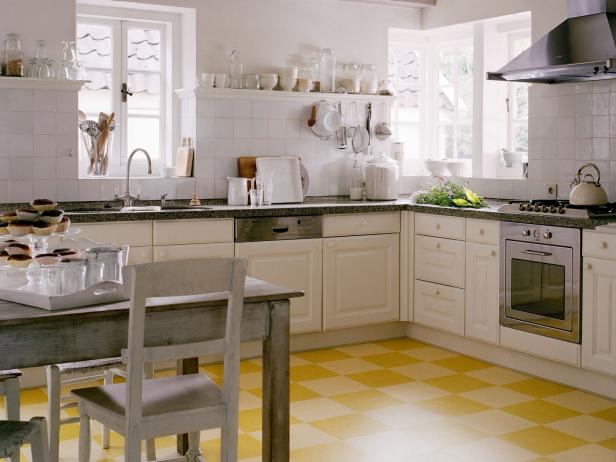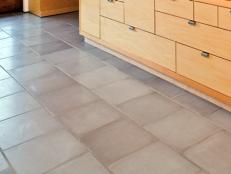Linoleum Flooring in the Kitchen

A rainbow of colors and a bevy of design options make linoleum a good choice for a kitchen floor. Often compared to vinyl, the durable surface is great for busy spaces. It stands up to foot traffic, water, heat, and scratching. Linoleum is inherently antibacterial and antistatic, making it hygienic and easy to clean. And a plus for avid cooks: linoleum floors are soft and comfortable underfoot. You can stand for a long time at the stove without getting achy.
Linoleum Kitchen Floors
See All PhotosWhat You Need to Know
The Lowdown: Linoleum is manufactured from natural materials including solidified linseed oil, resin, wood flour, limestone, and pigments.
Tough Enough? Linoleum is a hardy floor, standing up to heavy traffic and spills.
How to Clean: Wipe up spills immediately. Sweep, dust, or vacuum regularly, and occasionally wipe the surface with a damp mop or cloth. Clean with a mop and ph-neutral cleanser, and buff as needed (often only every few years). If a yellow cast appears (a film caused by the oxidation of linseed oil), exposure to artificial light or sunlight will cause it to disappear.
Considerations When Choosing Linoleum
Linoleum comes in several forms:
- Sheets. Usually two meters wide, can be sleek and seamless or accented with inlays and borders.
- Tiles. Come in several sizes and can be arranged in nearly any design, mixed and matched, and dressed up with accents.
- Panels and squares. Offer design versatility mixed with easy locking installation.
Linoleum comes in a variety of colors, from earthy neutrals to bright reds, greens, yellows, blues, and purples. The color is not just a coating but runs all the way through.
Linoleum colors and patterns can be mixed and matched to create many designs. You can set off the work area with a distinctive color or run a border along the perimeter of the kitchen.
Linoleum was out of vogue for a long time but it's making a comeback thanks to its eco-friendly and health-conscious qualities. Linoleum is made from natural materials, including linseed oil, wood resins and flour, and pigments. It's biodegradable and recyclable. Linoleum's surface repels dust and dirt for a floor that's hypoallergenic. It's also free of potentially harmful VOCs (volatile organic compounds).
Underlayment. With proper prep, linoleum can be installed over virtually any flat, dry, clean surface. In most cases, a plywood underlayment is recommended for the best results.







































